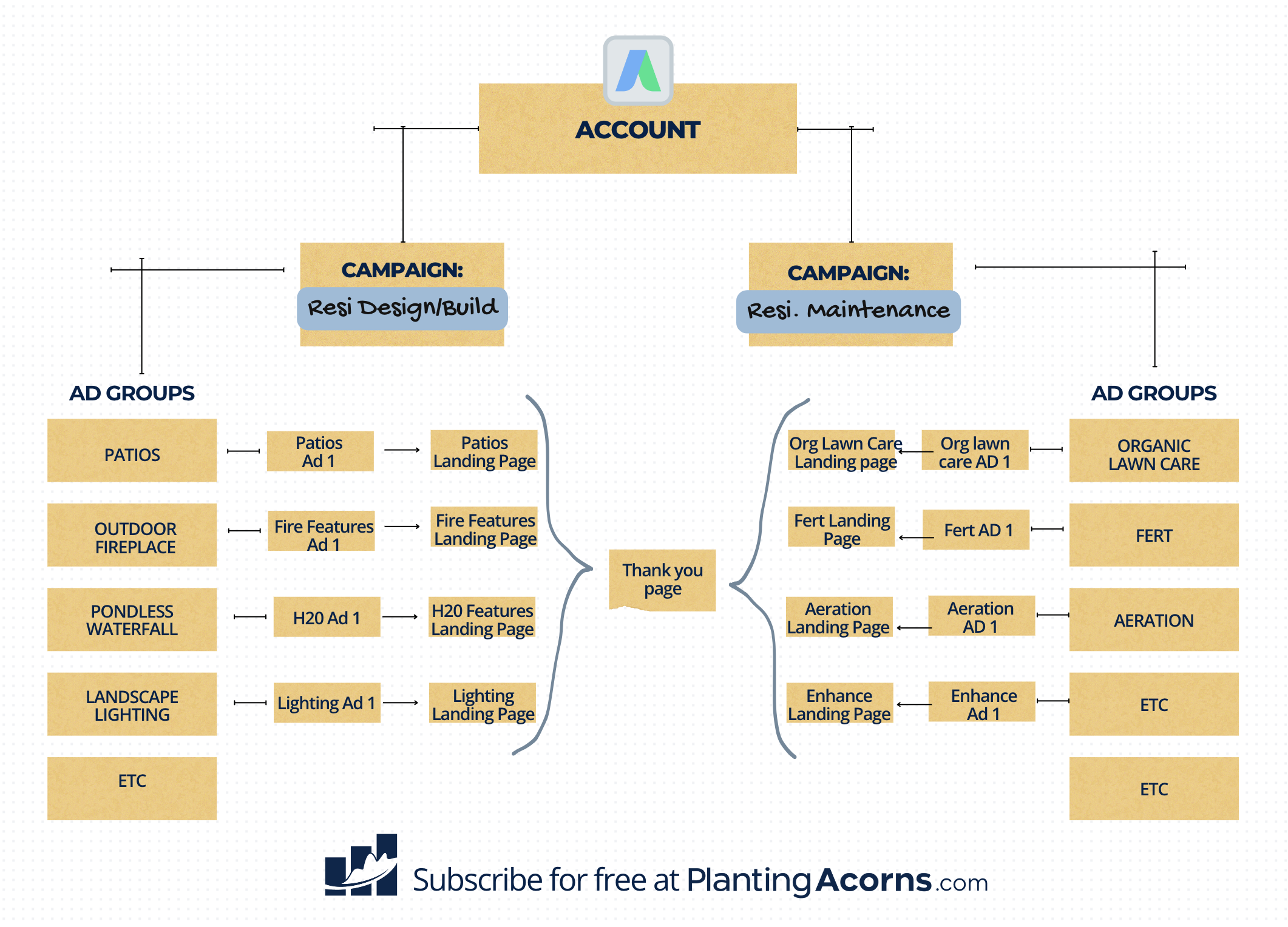The Ultimate Landing Page Blueprint: Get More Leads from Your Paid Ads
—
👉 THE BOTTOM LINE:
Don’t let your Google or Facebook ad dollars go to waste by sending traffic to your homepage or any other irrelevant page. Instead, channel visitors to dedicated landing pages crafted from a proven design formula. With clear messaging, trust-building testimonials, and effective calls-to-action, you’ll transform your online ads from accumulating empty "clicks" to becoming powerful lead-generation tools that drive sales and grow revenue.
——
Landing Pages are Essential for Conversion
Creating Google Ads and Facebook/Instagram/LinkedIn Ads that generate actual qualified leads involves a two-part equation: the ads themselves and the landing pages they lead to. Having one without the other typically yields lackluster results. Well-crafted ads pointing to subpar landing pages? Expect disappointing outcomes. Conversely, even the finest landing pages will underperform if the ads leading to them aren’t compelling and properly structured and targeted. Both elements must align for success. Our upcoming Google Ads deep dive course covers the exact formula to make it all work seamlessly. However, in today's email, we're breaking down the crucial landing page component.
👆Here’s a behind-the-scenes look at a high-performing Google Ads account structure. Notice how each ad drives to a dedicated landing page.
💡Why Landing Pages Matter
A landing page is where potential customers 'land' after clicking on your ad. Unlike directing visitors to your homepage, a dedicated landing page focuses on a very specific service or offer, minimizing distractions and guiding them towards one action, like requesting a quote or scheduling a consultation.This focus dramatically increases the likelihood of turning an ad click into an actual lead. In fact, according to HubSpot, proper landing pages can increase conversion rates by up to 55% when tailored specifically to advertising campaigns
🧱 Components of a Proven Landing Page
👆 High-performing landing page template/design formula.👆
☑️ Clear, Compelling Headlines: Your headline should instantly communicate the value of your offer. For Google Ads, include the target keyword such as ‘landscape design’ to ensure relevance. It should be concise, compelling, and directly related to the keywords or Facebook ad copy that initiated the visit.
☑️ Professional Images: Include high-quality images of your landscaping projects or accounts. Visuals are not just attention-grabbing; they can significantly improve conversion rates. For instance, for product-focused websites, high-quality photos can increase conversions by up to 60%—a principle that also applies to the landscape industry.
☑️ Persuasive Text (referred to as copy): Clearly explain what you are offering, how it benefits the user, and why your service stands out from the competition. Keep the copy focused and fluff-free.
☑️ Strong Call-to-Action (CTA): Your CTA should be bold and direct. Use phrases like “Schedule a Consultation” or “Speak with a Lawn Care Professional” to clearly guide prospects on what to do next.
☑️ Simplified Form: Only request essential information such as name, email, and phone number to make it as easy as possible for potential clients to reach out. For more established businesses, consider adding more detailed questions to pre-qualify leads, but for newer companies, be mindful of how additional questions might reduce conversion rates.
☑️ Build Trust: Include at least three testimonials or reviews from satisfied customers, strategically placed next to points of conversion such as CTAs. This boosts credibility and reassures new clients about the quality of your work.
⚙️🛠️ TAKE ACTION:
Whether you do your own marketing in-house, or work with an outside agency, ensuring your have these proper elements in place can drastically improve the performance of your Google and/or Facebook Ads. Remember, landing pages are a huge part of the 2-part equation to creating paid ads that deliver actual leads.
1️⃣ Outline Your Services Structure: Take a look at the account structure diagram above in this email. Make a copy of it and fill it out for your company. Outline your core departments (ie Maintenance vs Design/Build), and then the services within each. Identify which of these offerings you want to promote using paid ads and note the landing pages needed.
2️⃣ Create Your Landing Pages: Ideally, paid ads landing pages live on the backend of your site, meaning they are not linked in the main navigation or footer navigation. But for smaller companies just getting started, it’s okay to optimize the main services pages—those linked in your navigation—for Google Ads landing page use. Look at the design blueprint above to create your landing pages. This is a tested and proven formula based on millions of dollars in landscape-industry paid ad dollars. Note: Do not use landing pages services like Unbounce and others whenever possible. You want these pages on your actual website. Double note: Since most Facebook users (and over 50% of Google Ads users) are on mobile devices, ensure your pages look great and function well on mobile.
3️⃣ Create Your Thank-You-Pages: Develop thank you pages that users see after filling out a website lead form. These are crucial for tracking conversions and measuring the ROI of your ad spend.



